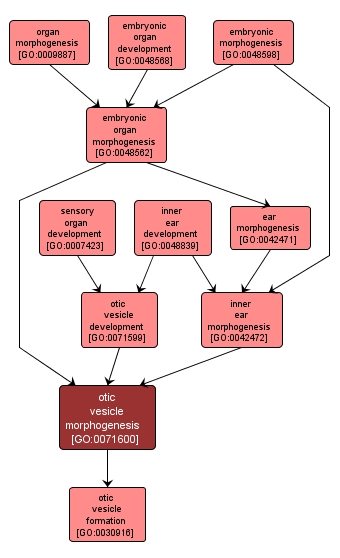GO TERM SUMMARY
|
| Name: |
otic vesicle morphogenesis |
| Acc: |
GO:0071600 |
| Aspect: |
Biological Process |
| Desc: |
The process by which the anatomical structures of the otic vesicle are generated and organized. Morphogenesis pertains to the creation of form. The otic vesicle is a transient embryonic structure formed during development of the vertebrate inner ear. |
|

|
INTERACTIVE GO GRAPH
|














